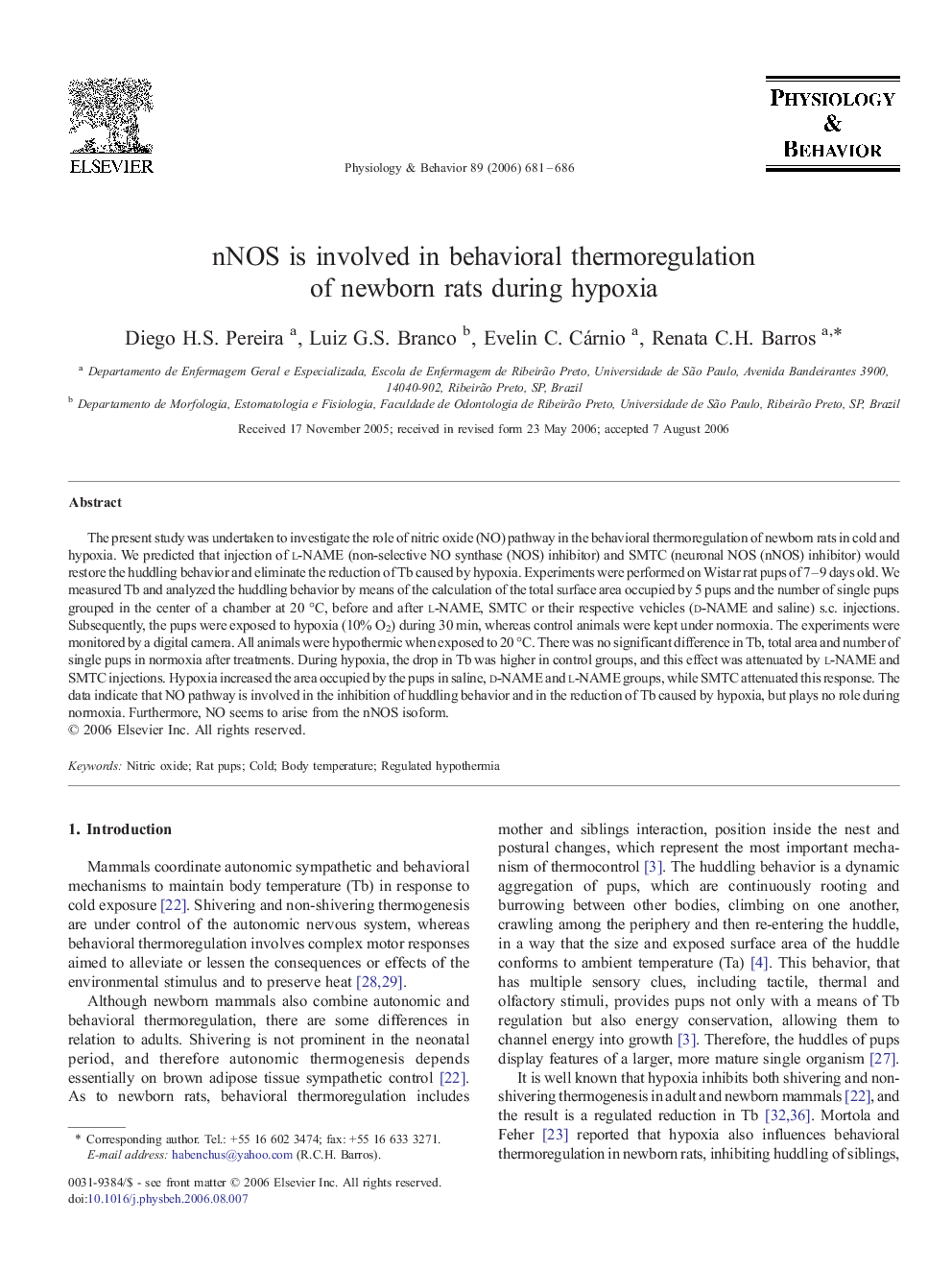| Article ID | Journal | Published Year | Pages | File Type |
|---|---|---|---|---|
| 2846161 | Physiology & Behavior | 2006 | 6 Pages |
Abstract
The present study was undertaken to investigate the role of nitric oxide (NO) pathway in the behavioral thermoregulation of newborn rats in cold and hypoxia. We predicted that injection of l-NAME (non-selective NO synthase (NOS) inhibitor) and SMTC (neuronal NOS (nNOS) inhibitor) would restore the huddling behavior and eliminate the reduction of Tb caused by hypoxia. Experiments were performed on Wistar rat pups of 7-9 days old. We measured Tb and analyzed the huddling behavior by means of the calculation of the total surface area occupied by 5 pups and the number of single pups grouped in the center of a chamber at 20 °C, before and after l-NAME, SMTC or their respective vehicles (d-NAME and saline) s.c. injections. Subsequently, the pups were exposed to hypoxia (10% O2) during 30 min, whereas control animals were kept under normoxia. The experiments were monitored by a digital camera. All animals were hypothermic when exposed to 20 °C. There was no significant difference in Tb, total area and number of single pups in normoxia after treatments. During hypoxia, the drop in Tb was higher in control groups, and this effect was attenuated by l-NAME and SMTC injections. Hypoxia increased the area occupied by the pups in saline, d-NAME and l-NAME groups, while SMTC attenuated this response. The data indicate that NO pathway is involved in the inhibition of huddling behavior and in the reduction of Tb caused by hypoxia, but plays no role during normoxia. Furthermore, NO seems to arise from the nNOS isoform.
Related Topics
Life Sciences
Biochemistry, Genetics and Molecular Biology
Physiology
Authors
Diego H.S. Pereira, Luiz G.S. Branco, Evelin C. Cárnio, Renata C.H. Barros,
